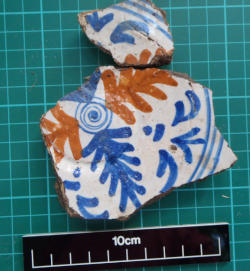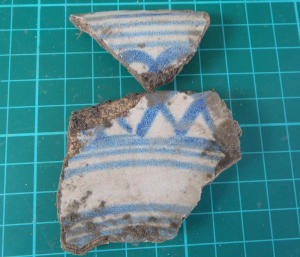12 Jul 2018
Forty Hall Summer Dig - Day 2
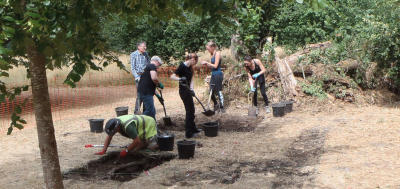
We made some good progress today in Forty Hall, as we continue our exploration of the interiors of the service ranges of Henry VIII's Elsyng Palace.
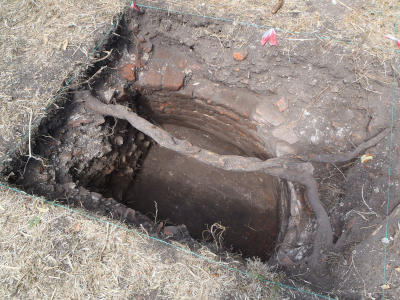
Late yesterday we finished relocating and marking out the outines of last year's trench, which uncovered a large area of heavily worn brick floor and a curious circular feature which at the time we thought was a bread oven but now we think is probably a large water-heating furnace for either the kitchen's scullery or boiling house.
This afternoon we finished re-exposing the part of the furnace we saw last year (pictured right) and started work on this year's expanded trench around it, which we hope will reveal the complete structure, and hopefully also the large perimeter wall of the building, which we think the furnace may be constructed up against.
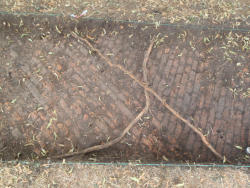
We began work on this at the room's west end, where we also expect to pick up the small wall which divides this building into at least two rooms (see previous year's blogs) -- so if the walls have survived several centuries of tree planting in Forty Hall's lime avenue, we should see the dividing wall and perimeter wall forming a T-junction.
Meanwhile in trench 2 (pictured right), we've mostly finished exposing more of last year's brick floor, slightly further north and closer to the barn which we now now is adjacent to our scullery/scalding house.
As we found last year, the floor is made of bricks laid on edge so as to be hard-wearing, and in at least two different alignments so as to make a herringbone pattern. It now begins to look as though this is for decorative effect rather than for a functional purpose.
Trench two continued to produce a considerable number of finds today, including large amounts of animal bone, one of which we suspect is the foreleg of a deer -- perhaps evidence of hunting on the Royal Chase -- one of the main reasons why Elsyng was popular with Tudor monarchs.
The trench has also turned up more fine glassware including the 'knop' of a wine glass (where the bowl and stem meet -- we found no fewer than seven of these last year) and also several very nice pieces of 'Delft' pottery -- hand painted tin-glazed earthenware produced mostly in Holland but also later in London.
The nicest piece (pictured below) was the center of a large plate, decorated in yellow and blue oak leaves and probably dates to the first half of the seventeenth century, during the palace's final years.
There's not much work left to do in trench two, and we may extend it tomorrow or later in the week, to see more of the floor. Now that the furnace is re-exposed in trench one we can also now start in earnest to open the new enlarged trench around it, which should provide some very nice archaeology for visitors to the park to see at the weekend.
You can explore interactive 3d models of last year's trenches at sketchfab
(Note that we now think the 'bread oven' is a water heating furnace).
